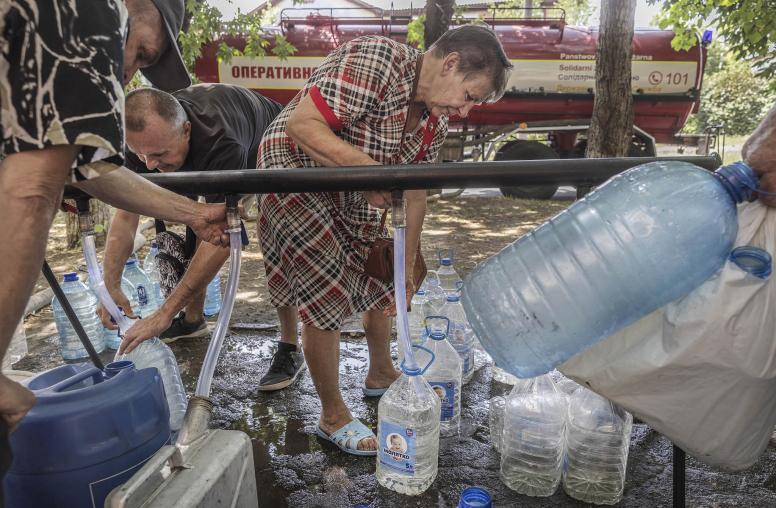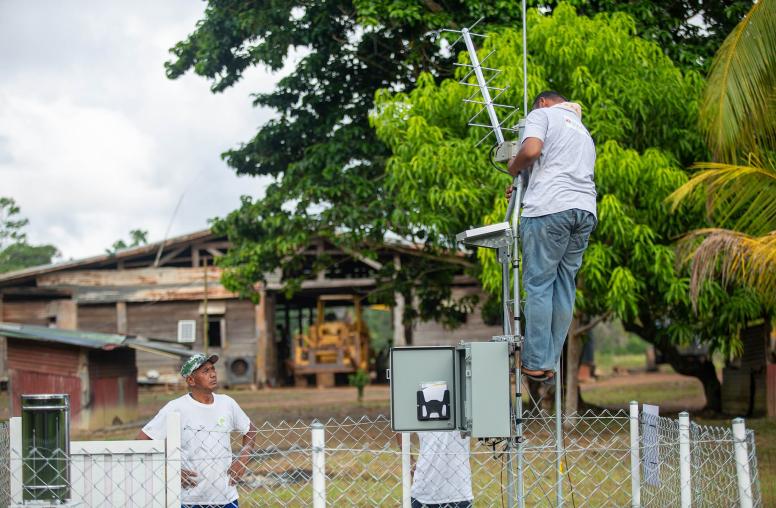New USIP Book on ‘Peace Economics’ Launched at Institute
Creating sound economic policy and a stable macroeconomic framework is essential to societies recovering from violent conflict, yet few practitioners have the background needed to apply economic concepts effectively. The two authors of "Peace Economics: A Macroeconomic Primer for Violence-Afflicted States" describe their effort to provide an overview of practical ways that sound macroeconomic policies can help build stability in states affected by violent conflict.

The U.S. Institute of Peace (USIP) on October 23 marked the publication of “Peace Economics: A Macroeconomic Primer for Violence-Afflicted States,” with the two authors describing their effort to provide an overview of practical ways that sound macroeconomic policies can help build stability in states affected by violent conflict.
The book is the first in USIP’s new “Academy Guides” series, which will introduce readers to topics in conflict management and provide explanations of key concepts along with advice for policymakers and others in conflict zones. Written by Jurgen Brauer and J. Paul Dunne, “Peace Economics” serves as a primer on macroeconomic fundamentals—including economic development, growth, macroeconomic stabilization, trade and finance—as they relate to states touched by conflict and are themselves affected by the violence. The book represents, as USIP’s Raymond Gilpin put it, an effort to spur thinking about “how we use economics to foster peace.”
Gilpin directs USIP’s Center of Innovation for Sustainable Economies, which commissioned the book and since 2007 has focused on analysis of the economic dimensions of conflict and peace promotion, including work on developing tools useful for policymakers and practitioners to respond to current and emerging threats.
Gilpin noted a pattern of “anomalies” in the field and in play in such countries as Afghanistan and Liberia. They have nominally high economic growth rates, he said, “yet if you take a closer look, inequality is widening, poverty is deepening and peace is really not assured.” He added, “All the underlying factors that lead to conflict and conflict-inducing tensions are still there and not resolved. It is clear that something needs to be done differently in terms of the way we design macroeconomic stabilization programs and also the ways we implement and monitor them.”
The Brauer-Dunne book pointedly compares the annual estimated loss of gross world product caused by violent conflict (8.7 percent) with the one-time loss of world output stemming from the 2009 recession and economic crisis (0.5 percent), concluding that “the ongoing, annual violence crisis is a much more severe economic problem and demands at least equally extraordinary policy attention and intervention.”
“Peace Economics” also offers case studies on policy missteps and good practices, as well as broad policy lessons for the future.
USIP President Jim Marshall, in opening remarks, noted that the “violence is causing the world to leave an awful lot of money and profits on the table.” He suggested that public and private entities, including corporations, together have an interest in “spending tax dollars in a wise fashion to further global peace.”
Brauer, a professor of economics at the Hull College of Business at Augusta State University, said the authors want to encourage policymakers and practitioners to encourage fundamental thinking and attention to identifying longer-term goals on economic aspects of supporting sustainable peace. A starting point, he said, is asking, “What sort of society do we envision?” The book aims to “bring the topic of ‘peace economics’ back to the table—essentially where it was left right after World War II,” he said.
Dunne, a professor of economics at the University of Cape Town, said that the book helps correct the widespread view of peace as the end of hostilities alone; those involved need to look much more deeply into the legacy costs of conflict and “start to see peace as a process,” he said.
The economic restructuring usually needed after a conflict can take years, calls for continuing international support and requires flexibility in applying economic priorities, Dunne said. Nations coming out of conflict are often urged to cut government spending and seek rapid macroeconomic stabilization, but one result can be the rapid demobilization of troops—in short, many jobless people with guns and greater risks of conflict restarting. Said Dunne, “Sometimes, the macroeconomic stabilization has to take a step back.”
Explore Further
- Read more about the event, Applying Peace Economics in Dangerous Places



